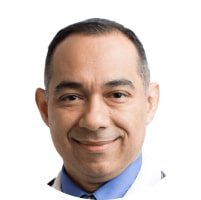Virtual care for rural and underserved communities
Watch the on-demand webinar on how virtual care is transforming healthcare for rural and underserved community members.
Speakers

Dr. Matthew Stinson
VP, Medical and Behavioral Health

Dr. Edgar Chavez
CEO
The event was a discussion on the implementation and benefits of virtual care strategies, particularly in rural and underserved communities. The session highlighted the challenges faced by these communities and provided an overview of TytoCare. The speakers also shared their experiences and insights on how their organizations have utilized virtual care programs.
Key insights:
- Access to care is often limited in rural and underserved communities due to long travel times, low income levels, and lack of internet connectivity.
- The COVID-19 pandemic has exacerbated these challenges, with increased exposure risks and workforce shortages.
- Telemedicine technology can be costly to implement and manage, but government-funded programs are helping to ease this burden.
- TytoCare is a virtual care solution that enables patients and care users to transfer high-quality examination data without needing to be in the same room.
- Virtual care can be deployed in a variety of applications, including school-based care, remote clinics, home care, and chronic care monitoring.
- Implementing virtual care strategies can help healthcare organizations better utilize their workforce, reduce no-show rates, and meet community needs more effectively.
- Despite the benefits, there are still challenges to implementing telehealth, including internet connectivity issues and the need for patient and staff training.
Takeaway 1: Using telehealth to overcome limitations caused by COVID-19
The speakers discussed how the COVID-19 pandemic has forced healthcare organizations to transform and adapt quickly, adopting telehealth to continue providing care to patients. They identified the challenges patients and health care organizations face in rural and underserved populations and highlighted the importance of telehealth to overcome these challenges. Marcos Dimiciano said, “We started some time highlighting challenges in rural health such as community demographics, access, exposure, and price.” He further explained, “When we look at access, there’s often long travel times to see specialists specifically in rural areas. We also have to think about the income levels of some of the individuals and their ability to even have transportation. So what we know is that access to care is limited.” Doctor Stinson added, “What we’ve built with TytoCare is a virtual care solution that enables patients and point-of-care users to transfer high-quality examination data without needing to be in the same room all in a virtual visit.”Takeaway 2: Adapting quickly to implement virtual care in healthcare organizations
The speakers shared their experiences of quickly implementing virtual care in their healthcare organizations in response to the pandemic. They highlighted the importance of being proactive, leveraging available resources, and training staff and patients to use new telehealth technologies. Doctor Chavez noted, “We realized very quickly, early in February, that there was going to be a huge drop in patient visits because of COVID, people were just going to stay away from clinics. And so, we were expecting that there would be a huge drop in numbers, but because we converted to telehealth, we saw seventy to eighty percent of our normal visits.” Doctor Stinson emphasized the importance of telehealth in reaching out to rural communities, saying, “We have the clinicians, in their clinic or at home. And we have the patients who’ll walk into the clinic, one of our rural clinics so that we can use the Tido platform to connect them.”Takeaway 3: The future of telehealth in healthcare
The speakers discussed the future of telehealth in healthcare organizations and how it can help overcome barriers to access. They shared their vision of using telehealth platforms to provide comprehensive care and increase patient engagement. Doctor Chavez explained, “So for us, the telehealth platform, using TytoCare is really the future of what we wanna do. Because number one, it helps us break barriers with internet connectivity because we have the patient in our office, and we’re helping them there.” Doctor Stinson added, “Eventually. Right? One of the things that we wanna do is we wanna take TytoCare to people’s homes, where, you know, there’s a lot of seniors that we’re worried about going out from home because of COVID or because of mobility issues. So we can actually say the clinic to them, and the provider doesn’t actually have to be there.”Learn more
Webinar

From School to Rural care: How to create effective, scalable telehealth programs
With the impact of COVID-19 still lingering, people are looking for ways to get back to their ‘normal’ lives. For healthcare, there’s no going back – the lessons we have learned over the last year are already being put into practice across the US to provide better healthcare for their constituents. This is particularly true […]
Blog

Addressing the problem of rural healthcare deserts
Many Americans living in rural areas are medically underserved. Can telehealth alleviate the burden by providing virtual healthcare to patients, wherever they are? Rural healthcare ‘deserts’ Rural healthcare disparities are a growing concern in America. Dozens of rural hospital facilities have closed over the past decade, and hundreds more are classified as vulnerable to closure. […]
